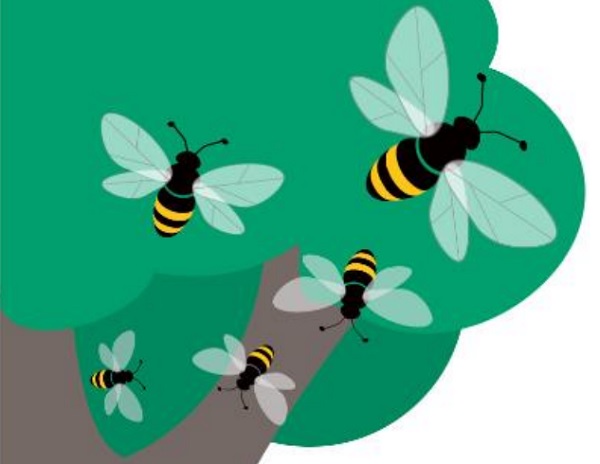
Following previous articles on the Recruiting Citizen Scientists and an Info Session, the Honey Bee Wild volunteer group has now launched a new initiative to identify honey bees living in cavities, which will then be used to monitor them over time as part of the citizen science project with Honey Bee Wild.
For many people, the last few months have provided an opportunity to spend more time outside, getting closer to nature. It seems therefore like the perfect time for a new initiative by the volunteer group Honey Bee Wild, calling upon all citizens to help support one of Luxembourg´s most useful and most threatened insects: the honey bee.
How can you help? Inform the group if you know of honey bees nested in cavities (e.g. in trees, attics, chimneys) around Luxembourg.
In Luxembourg, there are 342 species of bees, more than the country´s 185 nationalities, yet we know from a recent study in Germany that the total flying insect biomass has declined more than 75% in the last 27 years.
Whilst bees are most well-known and appreciated for their honey and pollen, they also have a very important role to play in the ecosystem as pollinators, and their absence has a profound impact on flora and fauna diversity, and ultimately on the food chains that we rely upon for our nourishment.
Habitat loss and the use of pesticides, as well as pathogens and parasites, are some of the main reasons behind the decline of honey bees worldwide. To address some of these threats, humans have organised selective breeding programmes to improve the resilience of honey bees. For the sake of the longevity of the species, the bees also need to evolve on their own, without human intervention. The surviving colonies will become harbours of desirable genetics and hence be able to increase the genetic diversity of the species to ensure its long-term survival.
This is why Honey Bee Wild wishes to study and support the wild populations of honey bees in Luxembourg, for which there are still many knowledge gaps, both in terms of distribution and abundance, and in terms of their biology. “You can only protect what you know. By studying the conditions for survival of the wild honey bee, citizen scientists gain understanding of how we interact with other species and the need to protect wildlife”, highlighted Christian Zewen, an active member of Honey Bee Wild. The information collected will be the basis of a citizen science project to monitor the status of the cavities and their occupants over a period of years.
Do you know a honey bee colony living in a tree or in a building? Of interest are honey bees living in cavities, be it natural ones such as in trees, or human-made structures, such as attics, chimneys, walls, nest boxes, statues, electricity poles and old barrels.
To obtain this form, click on “…”, and select “Download”. Complete the form and send it to Honey Bee Wild by email: honeybeewildlux@gmail.com.
For further information, see http://www.honeybeewild.eu/








